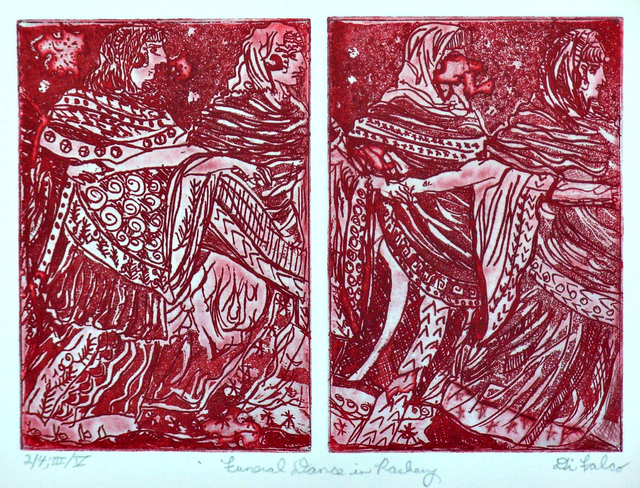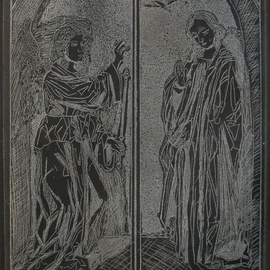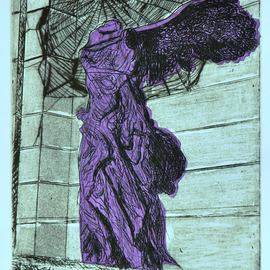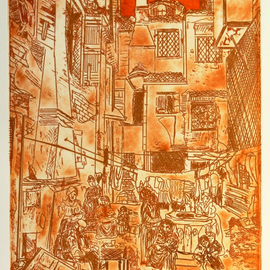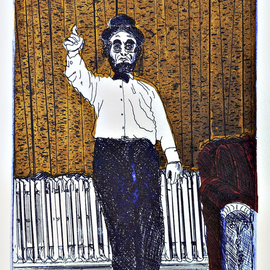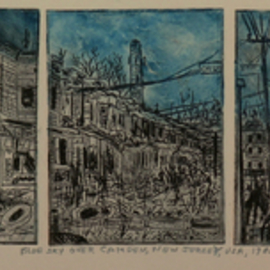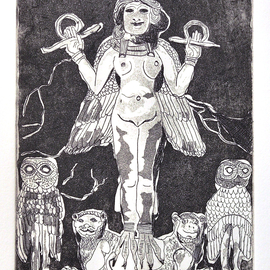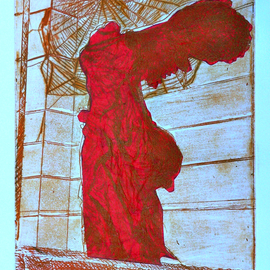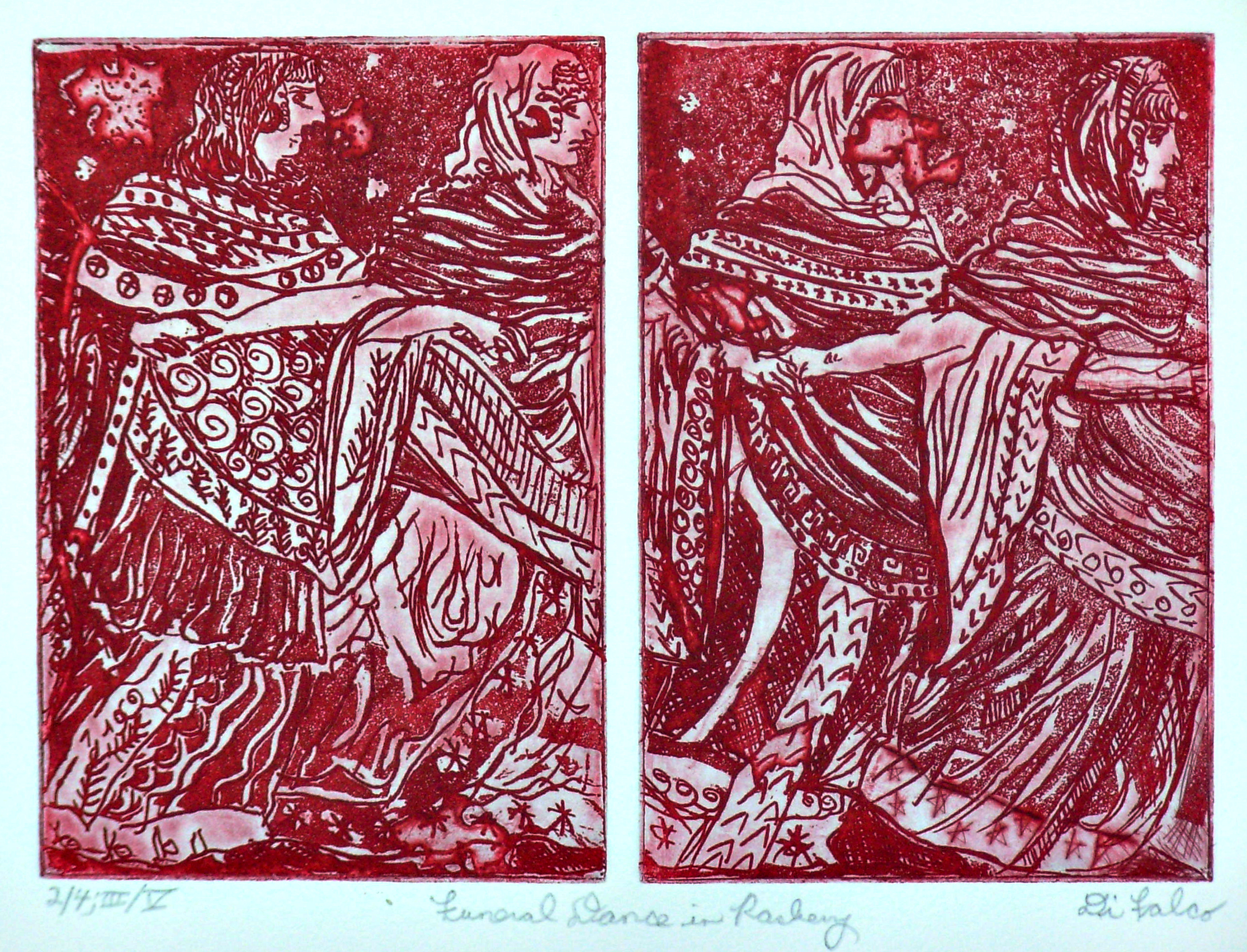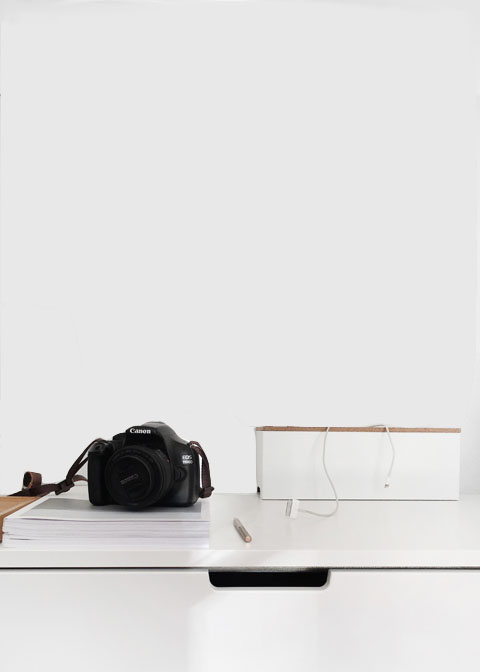Funeral Dance In Rasberry Printmaking By Jerry Di Falco
Artwork For Sale ❯ Printmaking ❯ Jerry Di Falco ❯ Etherial ❯ Funeral Dance In Rasberry
Artist:
Jerry Di Falco
Title:
Funeral Dance In Rasberry
Price:
Year:
2019
Medium:
Size - (USA):
17 W x 13 H x 1 D (inches)
Size - (metric):
43.2 W x 33.0 H x 2.5 D (centimeters)
Theme:
Edition:
Original
Artwork ID:
625395
PDF Copy:
Artwork Description:
This impenetrable etching was inspired by an ancient Etruscan fresco depicting a funeral dance. It was executed on two zinc plates, and each one required six Nitric Acid baths. All of these hand pulled editions were printed and published by the artist at The Center for Works on Paper in Philadelphia, Pennsylvania, which is a component of The Fleisher Art Open Studio in Printmaking. The individual plate sizes measure 5 inches wide by 7 inches high, making the image about 7 inches high by 10 inches wide. The print on paper measures about 11 inches high by 15 inches wide. The wood and glass frame measures 13 inches by 17 inches. A special blend of FIVE colors of oil base etching ink was employed on RivesBFK white paper. The studio techniques included INTAGLIO, AQUATINT, CHINE COLLE, DRYPOINT. Price includes a gold-painted frame, archival mat, shipment carton, bubble wrap, other packing materials, and a Certificate of Authenticity. The framing comes with a craft paper backing and a hanging hook and nail. The artist based this etching on his own original drawings, which were inspired by a museum slide of the work. This is the THIRD edition of FIVE, and is limited to only four etchings. The physically powerful visual depicts female dancers veiled from a funeral procession fresco in and ancient tomb. NARRATIVE According to the site http realhistoryww. com world_history ancient Misc Med Etruscan-tomb-painting1. htm “Etruscans, like Egyptians, painted their burial chambers with scenes reminiscent of fond activities during life, and scenes hopeful of a pleasant afterlife. The Tomb paintings also suggestthat sometime after Latin conquest of the Etruscans, relations between the two peoples became normalized. This is indicated by the prevalence of later bi-racial tomb scenes, as well as the changing appearance of the Etruscans themselves. As evidenced by tomb paintings and sarcophagusbi-racial marriages were common….“ Thousands of tombs exist in the vast cemetery of Cerveteri they are organized in a city-like plan, withstreets , small squares andneighbourhoods. The tombs are of different types depending on period, family status and other criteria. The earliest known are series of rock-cut trenches holding pottery ossuaries containing the ashes of the deceased. Most famous are the tumuli - tombs often containing more than one tomb under an imposing mound. A famous example is known as theHut Shaped Tomb , from the 4th century. It presents an excellent rock-cut hut with all structural and building elements, such as gabled roof, main crossbeam, wood and straw roofing materials as well as stone couches next to the walls. This tomb and others, imitating houses, are the best and only evidence of the residential architecture of the Etruscans.”Altra splendida opera proveniente dall’allora Real Museo Borbonico di Napoli, la lastra delle Danzatrici di Ruvo, che deve il suo nome alla misteriosa danza rituale affrescata sulle pareti di una tomba ipogeica a semicamera ritrovata nella località pugliese nel 1833 e appartenuta probabilmente ad un ricco personaggio di spicco della Ruvo di inizio IV secolo a. C. L’affresco delle danzatrici fu staccato dalle pareti della tomba e venduto in blocchi separati nel 1838, finendo a Napoli che ne presta , per la mostra, una lastra per incantare il pubblico con la sua bellezza e i suoi vivi colori e i misteri di una danza antica che si perde tra i secoli. Another splendid work from the then Royal Borbonic Museum of Naples, the slab of the Danzatrici di Ruvo, which owes its name to the mysterious ritual dance frescoed on the walls of a semi-chambered underground tomb found in the Apulian town in 1833 and probably belonged to a rich man prominent figure of the Ruvo at the beginning of the 4th century BC The fresco of the dancers was detached from the walls of the tomb and sold in separate blocks in 1838, ending up in Naples which lends, for the exhibition, a slab to enchant the public with its beauty and its vivid colors and the mysteries of an ancient dance which is lost over the centuries.
Artwork Keywords:
Original Printmaking
